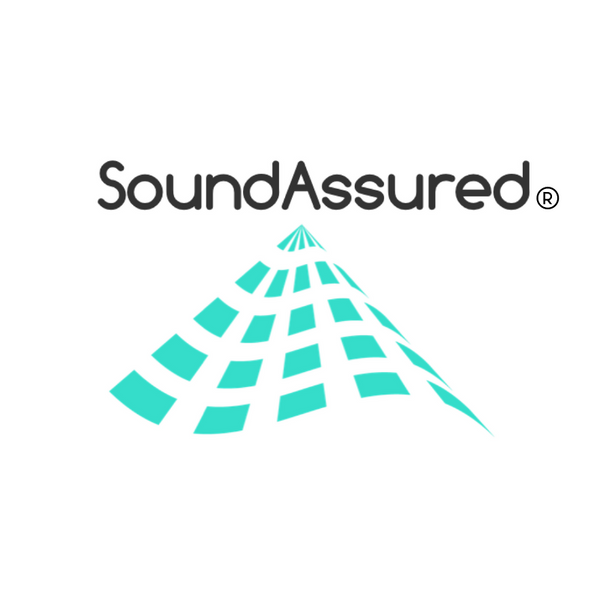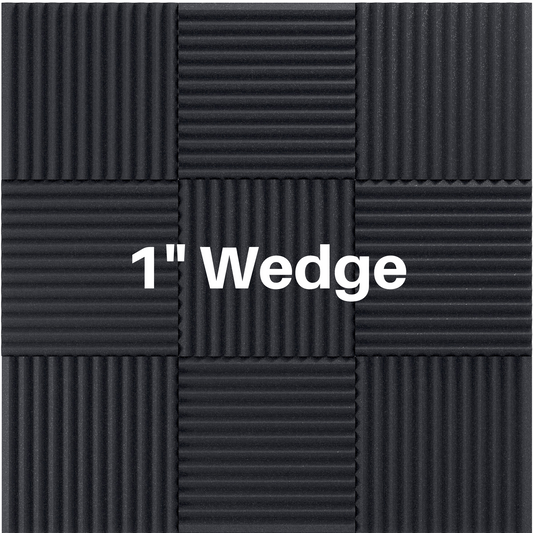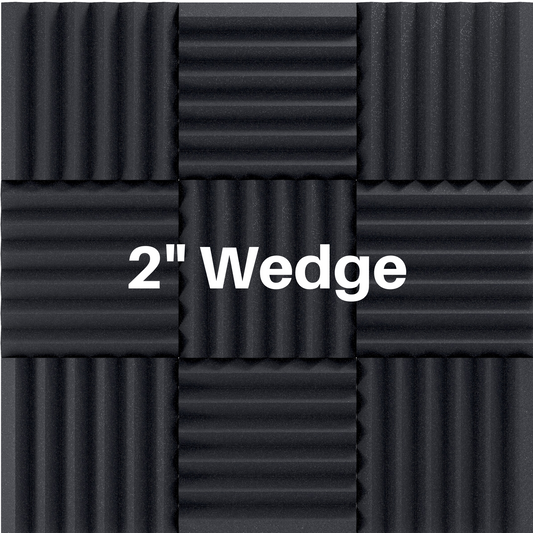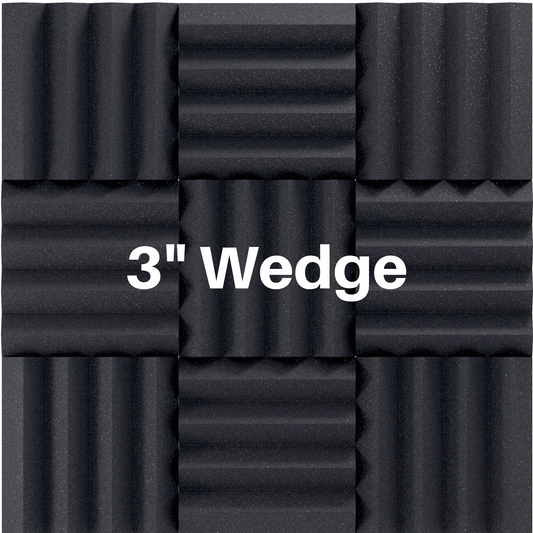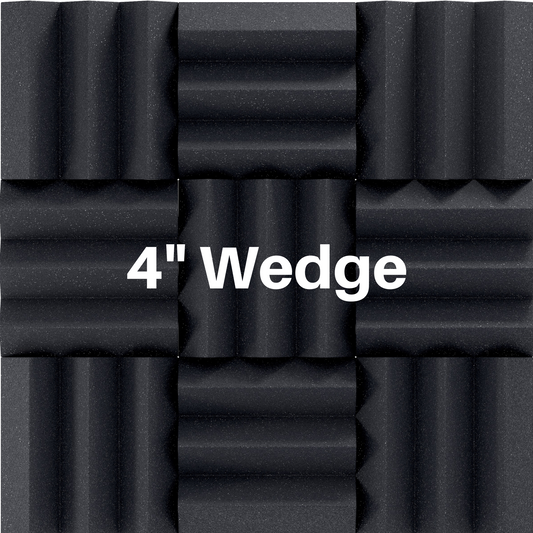Recording a Voiceover at Home: Budget Setup for Anyone Who Wants to Become a Voice Over Artist
Share
There are so many people who would love to be voice over artists but do not know how to get started. This blog post is for those people who want to give it a try at home, but don't know where to start. I will go into detail about the equipment you'll need, as well as things that need consideration when recording your voice at home. We will cover acoustic treatment inside of your room, noises that can come in and interfere with recordings, and more!
Check out our closet vocal booth kit!
Microphone + Pop Filter
When it comes to budget voice over setups, there are a few things you will need in order to get started. The first thing you'll need is a microphone. There are many different types of microphones on the market, and each one has its own benefits and drawbacks. If you're just starting out, I would recommend using a USB microphone . They are relatively affordable and easy to use. You can simply plug them into your computer and start recording.
You may also want to consider a pop filter. This will help eliminate any "popping" sounds from happening while you speak into the microphone. These are essential for your vocal recordings. Pop filters work to eliminate the hisses and plosives in your recordings. The pop filter will attach to your mic stand or desk, and will be positioned so your voice goes through the filter and into the mic. If you ever made a recording and had clipping on "P" sounds then you know what I'm talking about. Pop filters will save you so much time and get you better recordings!
Check out our pop filter video:
Acoustic Treatment
To record your voiceover at home, you'll need acoustic treatment . Without proper acoustics in your room, it could sound like you're recording inside of an echo chamber! This is because all that noise bouncing around in the walls comes into contact with your microphone, and gets recorded. You'll need to consider things like carpets or rugs on the floor, along with other treatments like acoustic foam panels that you can do within your room!
One option is to do acoustic treatment in the whole room:
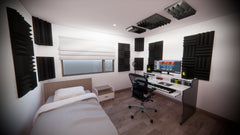
One of our recording studio bundles would be great for your home voice over setup!
Another option is to create a vocal recording area in your room. Below is an example of a vocal shield that sits on top of a bookcase.


You will also want to make sure that there are minimum outside noises coming in from windows, doors opening and closing etc., as they could interfere with recordings.
For sound coming through a wall a good solution to block the noise is to add another layer of drywall with green glue in between. The added mass of more sheetrock combined with the noise blocking properties of green glue will block the sound much better than acoustic foam panels. This is the simplest fix that wouldn't require structural modification to the wall frame. However, that is a pretty large project and you might not even be able to do that if you are renting.
For windows, some easy and cheap ideas are weatherstripping or caulk combined with thick curtains. Many times there are small cracks in the windows that are letting the sound through. Weatherstripping or caulk can help tackle that problem fairly easy. Thick curtains will also help dampen sound. Even having a thick comforter over the window will help if you have an extra one around.
Once you have set up your recording space, you will want to make sure that there are no other noises in the room. You can do this by shutting off all fans or air conditioning units. Some lights, especially florescence lights can give off a lot of sound that will be picked up by microphones. If you're using a computer to record with, it would be helpful if you shut down any programs running in the background.
DAW - Recording Software
Another thing you'll need is a DAW, or digital audio workstation. This is the software you will use to record, edit, and mix your voiceover tracks. There are many different DAWs available on the market, but the most popular ones are Pro Tools, LogicProX , and GarageBand (which comes free on macs and iPads).
Other Equipment + Gear
Next is equipment choice! As I mentioned before, USB microphones are an easy way to get started with recording audio at home. They are affordable, and many of them come with their own built-in audio interfaces. This means that you don't have to purchase an additional piece of equipment, which can save you some money.
If you're looking for a higher quality microphone, I would recommend an XLR microphone . These microphones connect to an audio interface , which then connects to your computer. Large diagram condenser XLR microphones are great for recording vocals. Shure makes a good XLR mic. However, they are more expensive than USB microphones.
Lastly, you will need an audio interface. This is the equipment that connects your microphone to your computer. If you choose a USB microphone , this piece of equipment isn't necessary because it's already built into the device! However if you choose an XLR Microphone , then you'll have some research to do when it comes time for purchasing one.
Many people have asked me which audio interface they should buy, so I thought I would give you my two cents! Audio interfaces come in different shapes and sizes. There are ones that sit directly on your desk, while others are rack mounted . They can get pretty pricey, but there are quality affordable options like the Scarlett 2i2. Universal Audio is more expensive but totally worth it.
So now you know what equipment you need to become the next voice over star, but how do you set everything up so you can record your first demos?
How To Set Up Your Voice Over Studio At Home
Step 1 - Plan your recording workflow and recording area. Will you record right next to your desk, or will you create a make shift vocal booth in your closet? Think about what setup will make you the most comfortable and get you the best sound.
Step 2 - Figure out the reflection points of your voice around your microphone and place acoustic treatment at the reflection points.


Step 3 - Make sure that you have eliminated any other noises from your recording space. Sometimes it may be impossible to remove all the outside noises like train, traffic, or airplane noise. In these cases you will have to work around these unless you want to put a serious investment into soundproofing.
Step 4 - Connect your microphone to your audio interface, and connect the audio interface to your computer. If you are using an USB mic then just plug it in!
Step 5 - Launch your DAW, and start recording! There are a ton of help articles and videos out there about how to work a DAW. If you have never used a DAW before I recommend picking one and sticking with it for a while because there is a bit of a learning curve with each DAW.
Now that you know how to create a voice over studio at home on a budget, go out there and become the voice over star that you were meant to be!
I hope this blog post was helpful in providing a basic overview of what equipment is needed for creating a home studio, and how all of it works together. If you have any questions at all please contact us! Cheers!
